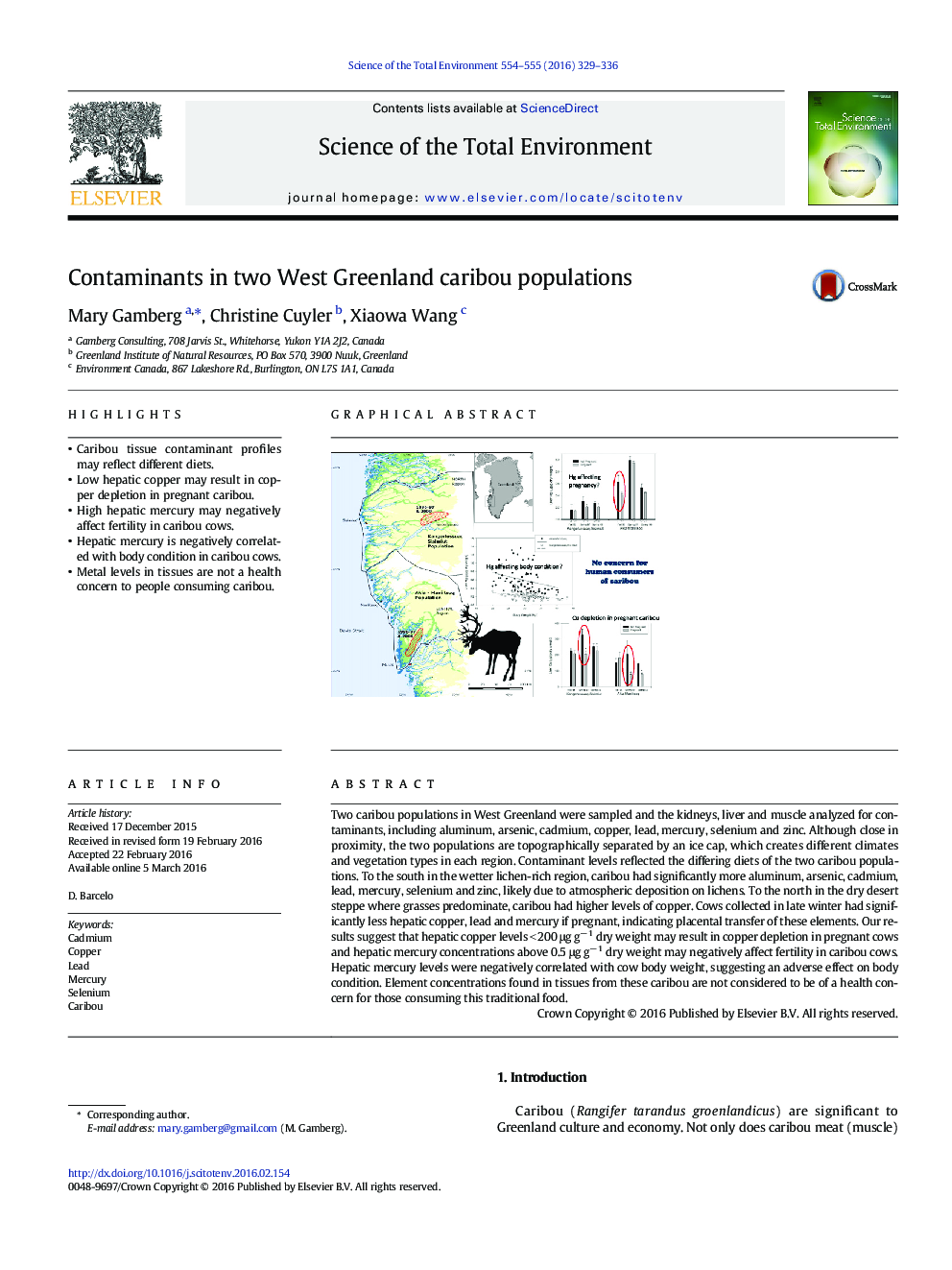| Article ID | Journal | Published Year | Pages | File Type |
|---|---|---|---|---|
| 6322226 | Science of The Total Environment | 2016 | 8 Pages |
â¢Caribou tissue contaminant profiles may reflect different diets.â¢Low hepatic copper may result in copper depletion in pregnant caribou.â¢High hepatic mercury may negatively affect fertility in caribou cows.â¢Hepatic mercury is negatively correlated with body condition in caribou cows.â¢Metal levels in tissues are not a health concern to people consuming caribou.
Two caribou populations in West Greenland were sampled and the kidneys, liver and muscle analyzed for contaminants, including aluminum, arsenic, cadmium, copper, lead, mercury, selenium and zinc. Although close in proximity, the two populations are topographically separated by an ice cap, which creates different climates and vegetation types in each region. Contaminant levels reflected the differing diets of the two caribou populations. To the south in the wetter lichen-rich region, caribou had significantly more aluminum, arsenic, cadmium, lead, mercury, selenium and zinc, likely due to atmospheric deposition on lichens. To the north in the dry desert steppe where grasses predominate, caribou had higher levels of copper. Cows collected in late winter had significantly less hepatic copper, lead and mercury if pregnant, indicating placental transfer of these elements. Our results suggest that hepatic copper levels < 200 μg gâ 1 dry weight may result in copper depletion in pregnant cows and hepatic mercury concentrations above 0.5 μg gâ 1 dry weight may negatively affect fertility in caribou cows. Hepatic mercury levels were negatively correlated with cow body weight, suggesting an adverse effect on body condition. Element concentrations found in tissues from these caribou are not considered to be of a health concern for those consuming this traditional food.
Graphical abstractDownload high-res image (310KB)Download full-size image
